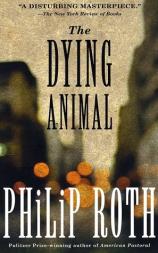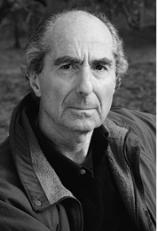Reading Group Guide
Discussion Questions
The Dying Animal

1. To begin, answer these questions using the book as your guide. Read aloud the relevant sentences or passages. a. Why is Janie Wyatt Kepesh’s hero [pp. 48–58]? b. Why is Caroline Lyons Kepesh’s lover [pp. 46–48, 69–76]? c. Why does Miranda stay behind after the party [pp. 7–9]? d. Why does Elena Hrabovsky come to Kepesh when she’s unhappy about her life with men? What is Kepesh’s response to her unhappiness [pp. 107–110]? e. Why is Kepesh’s description of Consuela’s vulva so detailed [p. 103]? Why the aquatic and artistic references? What human emotion informs this passage?
2. What are the sources of pleasure in Consuela Castillo and David Kepesh’s relationship? What do they offer each other? What allows each to "master" the other? Describe Consuela.
3. Why does Kepesh become obsessively jealous? Do his pleasure and jealousy derive from the same source?
4. What is the place of music in Kepesh’s life? What about books?
5. After Consuela leaves Kepesh, his friend the poet George O’Hearn warns him to stay away from her: "This is the pathology in its purest form. . . . You violated the law of aesthetic distance. You sentimentalized the aesthetic experience with this girl—you personalized it, you sentimentalized it, and you lost the sense of separation essential to your enjoyment" [p. 99]. Why would George suggest, and Kepesh be receptive to, the notion that sexual relations be governed by aesthetic laws?
6. Kepesh agrees with George that "attachment is ruinous," finds those who voluntarily give up their freedom "ridiculous," and feels that "marriage at its best is a sure-fire stimulant to the thrills of licentious subterfuge" [p. 111]. His son Kenny, who struggles to make his own marriage work, accuses him of gross irresponsibility, of confusing sexual freedom with vulgar self-interest, of behaving like a lecherous fool. Does the novel resolve these conflicting points of view? Does it endorse one position over the other or simply bring them into clarifying opposition?
7. Why doesn’t Kepesh’s son Kenny listen to his father? Is Kepesh not giving Kenny good advice?
8. In what ways is The Dying Animal about the intersection of America’s cultural history with David Kepesh’s personal history? How does he interpret the sixties? How does the sexual revolution "revolutionize" his life? What does it cost him?
9. Kepesh argues that family life is childish and that "emancipated manhood never has had a social spokesman or an educational system. It has no social status because people don’t want it to have social status" [p. 112]. Why do people refuse to give "emancipated manhood" social status? Do they give "emancipated womanhood" social status? If Kepesh were gay or female, would that alter your response to the book?
10. Why does Roth include the extended section on George O’Hearn’s death? What is the motive behind O’Hearn’s final desperate attempt to undress his wife [pp. 121–3]?
11. How does Consuela’s illness abolish the age difference between her and Kepesh?
12. Even though its last word is "finished," and even though its final pages are filled with anxiety about death, The Dying Animal is open-ended. Why does Roth choose to close the book in this way? What is likely to happen to David Kepesh? Will he ignore his listener’s warning and go to Consuela? If so, will it be the end of him?
The Dying Animal
- Publication Date: July 9, 2002
- Genres: Fiction
- Paperback: 176 pages
- Publisher: Vintage
- ISBN-10: 037571412X
- ISBN-13: 9780375714122








